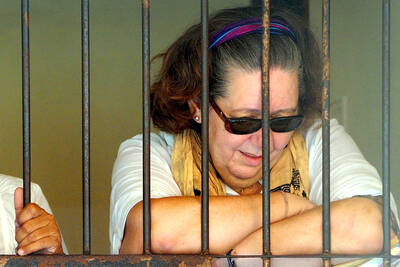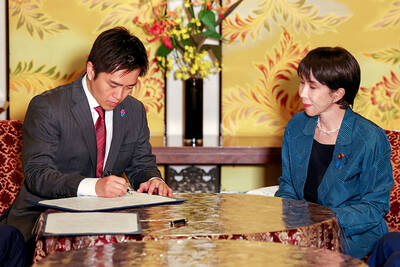The planet known as HD 189733b, discovered in 2005, already had a reputation as a rather extreme place, a scorching hot gas giant a bit larger than Jupiter that is a striking cobalt blue color and has molten glass rain that blows sideways in its fierce atmospheric winds. So how can you top that?
Add hydrogen sulfide, the chemical compound behind the stench of rotten eggs.
Researchers on Monday said that new data from the James Webb Space Telescope are giving a fuller picture of HD 189733b, already among the most thoroughly studied exoplanets, as planets beyond our solar system are called.

Photo: Reuters / Roberto Molar Candanosa / Johns Hopkins University
A trace amount of hydrogen sulfide was detected in its atmosphere, a first for any exoplanet.
“Yes, the stinky smell would certainly add to its already infamous reputation. This is not a planet we humans want to visit, but a valuable target for furthering our understanding of planetary science,” said astrophysicist Guangwei Fu, assistant research scientist at Johns Hopkins University in Baltimore, lead author of the study published in the journal Nature.
It is a type called a “hot Jupiter” — gas giants similar to the largest planet in our solar system, only much hotter owing to their close proximity to their host stars. This planet orbits 170 times closer to its host star than Jupiter does to the sun. It completes one orbit every two days, as opposed to the 12 years Jupiter takes for one orbit of the sun.
In fact, its orbit is 13 times nearer to its host star than Mercury is to the sun, leaving the temperature on the side of the planet facing the star at about 930°C.
“They are quite rare,” Fu said of hot Jupiters. “About less than one in 100 star systems have them.”
This planet is 64 light-years from Earth, considered in our neighborhood within the Milky Way galaxy, in the constellation Vulpecula.
“The close distance makes it bright and easy for detailed studies. For example, the hydrogen sulfide detection reported here would be much more challenging to make on other faraway planets,” Fu said.
The star it orbits is smaller and cooler than the sun, and only about one-third as luminous. That star is part of a binary system, meaning it is gravitationally bound to another star.
Webb, which became operational in 2022, observes a wider wavelength range than earlier space telescopes, allowing for more thorough examinations of exoplanet atmospheres.
“Our research finds that HD 189733b is more similar to Jupiter than previously known,” Arizona State University astrophysicist and study co-author Luis Welbanks said. “This planet is very much like Jupiter, but just hotter.”
Jupiter also has trace amounts of hydrogen sulfide in its atmosphere. This planet is about 10 percent larger than Jupiter in diameter and mass.
In addition to detecting hydrogen sulfide, a sulfur-containing molecule, Webb observations showed that this planet has water and carbon dioxide in its atmosphere, as earlier data also indicated.
“With these three molecules, we are able to count the amount of oxygen, carbon and sulfur the planet has, giving us an opportunity to understand how the planet may have formed and whether it is different or not to the planets in our solar system,” Welbanks said.
The Webb observations also ruled out the presence of methane in the planet’s atmosphere.
“Understanding the composition of this and other exoplanets allows us to understand how unique our own solar system is and helps us place our existence in context,” Welbanks added.
“While we are not searching for life on HD 189733b — it is too hot, made up mostly of hydrogen and helium, it’s not like Earth, et cetera — understanding its atmosphere allows us to understand how physics and chemistry behave under different environments and to begin to put together the ‘recipe’ for forming planets,” he said.

Indonesia was to sign an agreement to repatriate two British nationals, including a grandmother languishing on death row for drug-related crimes, an Indonesian government source said yesterday. “The practical arrangement will be signed today. The transfer will be done immediately after the technical side of the transfer is agreed,” the source said, identifying Lindsay Sandiford and 35-year-old Shahab Shahabadi as the people being transferred. Sandiford, a grandmother, was sentenced to death on the island of Bali in 2013 after she was convicted of trafficking drugs. Customs officers found cocaine worth an estimated US$2.14 million hidden in a false bottom in Sandiford’s suitcase when

CAUSE UNKNOWN: Weather and runway conditions were suitable for flight operations at the time of the accident, and no distress signal was sent, authorities said A cargo aircraft skidded off the runway into the sea at Hong Kong International Airport early yesterday, killing two ground crew in a patrol car, in one of the worst accidents in the airport’s 27-year history. The incident occurred at about 3:50am, when the plane is suspected to have lost control upon landing, veering off the runway and crashing through a fence, the Airport Authority Hong Kong said. The jet hit a security patrol car on the perimeter road outside the runway zone, which then fell into the water, it said in a statement. The four crew members on the plane, which

Japan’s ruling Liberal Democratic Party (LDP) and its junior partner yesterday signed a coalition deal, paving the way for Sanae Takaichi to become the nation’s first female prime minister. The 11th-hour agreement with the Japan Innovation Party (JIP) came just a day before the lower house was due to vote on Takaichi’s appointment as the fifth prime minister in as many years. If she wins, she will take office the same day. “I’m very much looking forward to working with you on efforts to make Japan’s economy stronger, and to reshape Japan as a country that can be responsible for future generations,”

SEVEN-MINUTE HEIST: The masked thieves stole nine pieces of 19th-century jewelry, including a crown, which they dropped and damaged as they made their escape The hunt was on yesterday for the band of thieves who stole eight priceless royal pieces of jewelry from the Louvre Museum in the heart of Paris in broad daylight. Officials said a team of 60 investigators was working on the theory that the raid was planned and executed by an organized crime group. The heist reignited a row over a lack of security in France’s museums, with French Minister of Justice yesterday admitting to security flaws in protecting the Louvre. “What is certain is that we have failed, since people were able to park a furniture hoist in the middle of